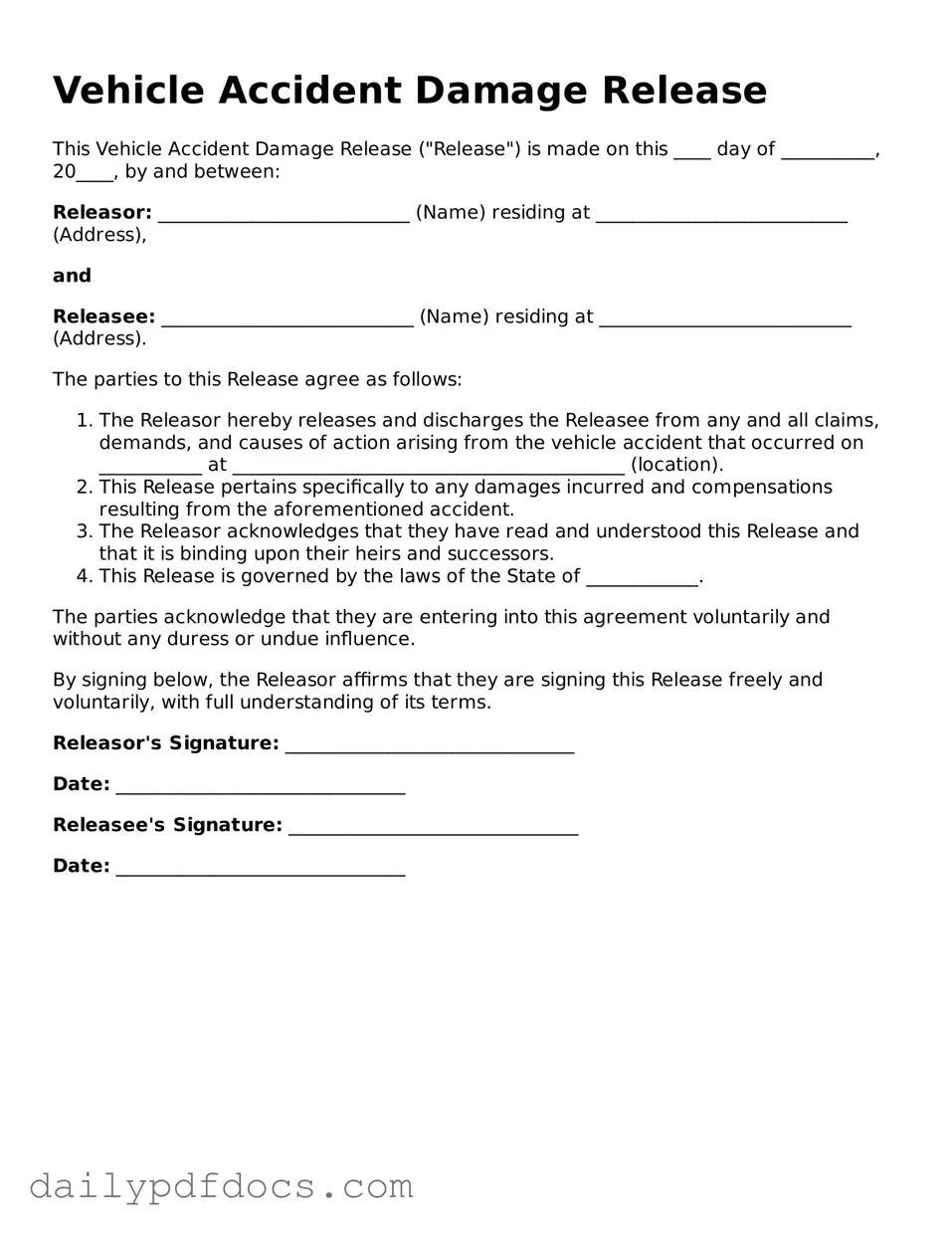Vehicle Accident Damage Release
This Vehicle Accident Damage Release ("Release") is made on this ____ day of __________, 20____, by and between:
Releasor: ___________________________ (Name) residing at ___________________________ (Address),
and
Releasee: ___________________________ (Name) residing at ___________________________ (Address).
The parties to this Release agree as follows:
- The Releasor hereby releases and discharges the Releasee from any and all claims, demands, and causes of action arising from the vehicle accident that occurred on ___________ at __________________________________________ (location).
- This Release pertains specifically to any damages incurred and compensations resulting from the aforementioned accident.
- The Releasor acknowledges that they have read and understood this Release and that it is binding upon their heirs and successors.
- This Release is governed by the laws of the State of ____________.
The parties acknowledge that they are entering into this agreement voluntarily and without any duress or undue influence.
By signing below, the Releasor affirms that they are signing this Release freely and voluntarily, with full understanding of its terms.
Releasor's Signature: _______________________________
Date: _______________________________
Releasee's Signature: _______________________________
Date: _______________________________
